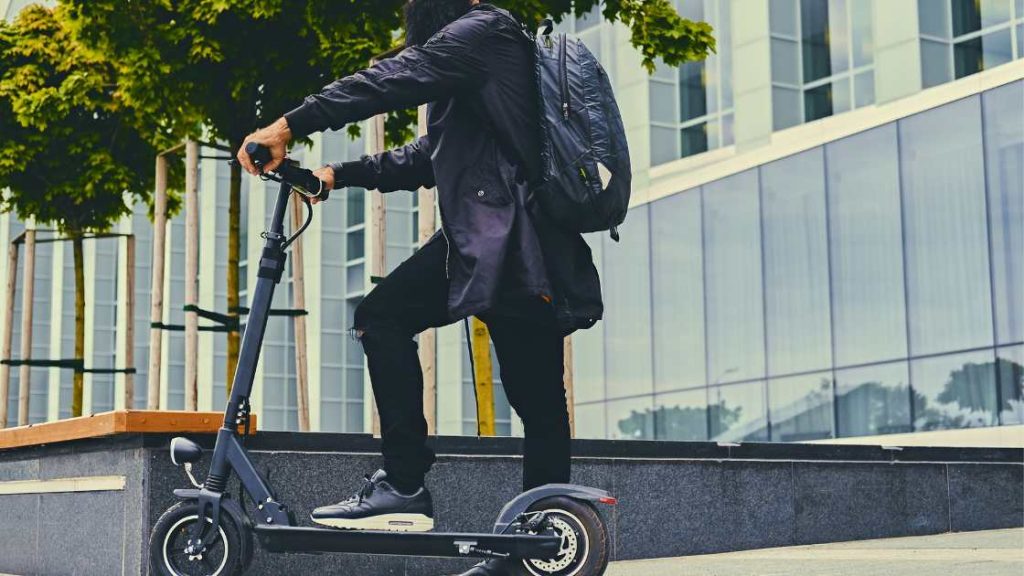Do You Know “How Much Does An Electric Scooter Weight?” An average electric scooter weight approximately 27 pounds. Our electric scooters vary in weight due to design , battery size and materials used.
Electric scooters have become a popular mode of transportation in the urban landscape, prized for their eco-friendliness and convenience. They offer a quick and efficient way to navigate through city streets, bypassing traffic and reducing carbon footprints.
The weight of an electric scooter is a critical factor for potential buyers as it affects portability and ease of handling.
A lightweight scooter is ideal for those who may need to carry it onto public transportation or up flights of stairs. With advancements in technology, manufacturers are constantly working to strike a perfect balance, reducing weight without compromising on performance or durability.
This attention to detail ensures that consumers can find an electric scooter that not only meets their commuting needs but is also comfortable to transport and store.
Table of Contents
ToggleElectric Scooters: Unpacking The Pounds
Electric Scooters: Unpacking the Pounds – A glance at the scales reveals more than just numbers. Those figures tell a story of engineering marvels, personal transport solutions, and environmental consideration. The weight of electric scooters varies as much as their designs and purposes.
Let’s dive into the factors that add heft to these two-wheeled wonders and examine the range of weights you might encounter.
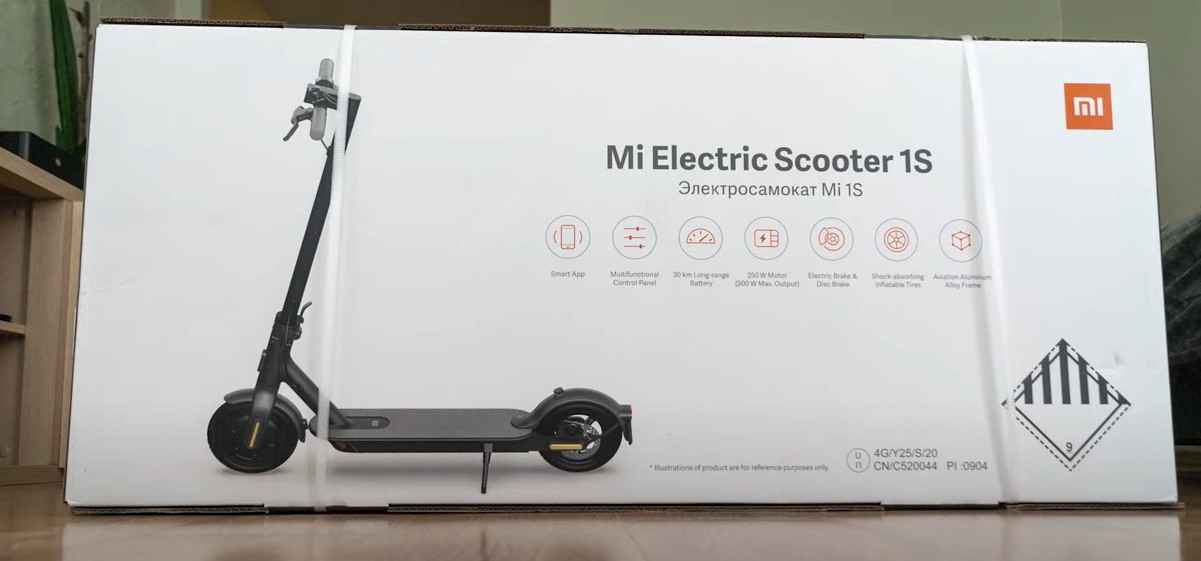
Key Components That Influence Weight
The mass of an electric scooter hinges on several pivotal parts:
- Frame Material: Often aluminum for lightness or steel for durability.
- Battery Size: Larger batteries offer more power and range but add weight.
- Motor Power: More watts mean more weight.
- Wheels: Both their size and substance can tip the scales.
- Additional Features: Added tech or comforts can pack on pounds.
Weight Spectrum Of Electric Scooters

Scooters come in a range of weights to suit different needs:
| Category | Weight Range |
|---|---|
| Ultra-Lightweight | 15-20 lbs |
| Lightweight/Commute | 20-30 lbs |
| Standard | 30-50 lbs |
| Heavy-Duty/Off-Road | 50+ lbs |
Each class serves a distinct purpose: Ultra-lightweight for easy carry, Lightweight for frequent travelers, Standard for balanced performance, and Heavy-Duty for rough terrains and extended use.
Scooter Weight And Portability
Electric scooters blend high-tech mobility with lightweight designs. Many users favor these compact rides due to their easy handling. A scooter’s weight can shape your overall experience, from daily commutes to weekend adventures.
Ease Of Transportation
Carrying an electric scooter is a key consideration for riders. You might need to lift your scooter over obstacles or take it upstairs. Let’s break down the factors influencing transportation ease:
- Handle Design: Grips and balance points make a difference.
- Weight Class: Scooters generally fall into light, medium, or heavy categories.
- Foldability: A foldable frame makes storage in tight spaces possible.
Impact On Usability
The weight of an electric scooter not only affects transportation. It also influences usability. Heavier scooters may offer more power, but they can also be tough to maneuver. In contrast, lighter models grant agility and ease of use. Here’s a glance at how weight impacts scooter usability:
| Scooter Weight | Advantages | Disadvantages |
|---|---|---|
| Light (< 15kg) |
|
|
| Medium (15-25kg) |
|
|
| Heavy (> 25kg) |
|
|
Weight Classifications Of Electric scooters
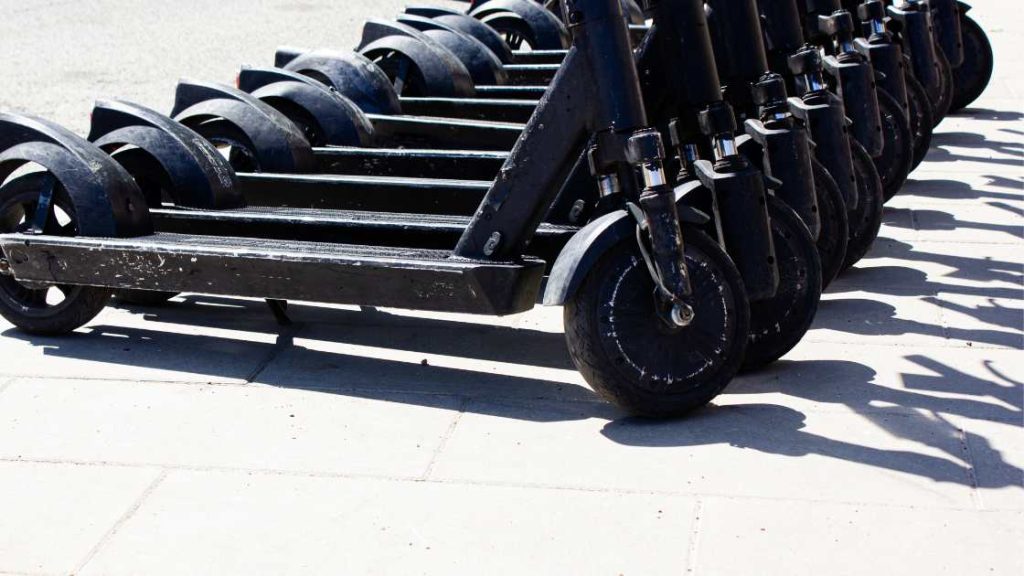
Picking the right electric scooter involves considering its weight. Riders look for a balance between portability and performance. Let’s understand the weight classifications of electric scooters.
Lightweight Electric Scooters
Lightweight electric scooters are the go-to for quick trips. Easy to carry, these scooters suit daily commuters.
- Typical weight: 15 to 25 lbs (7 to 11 kg)
- Ideal for: Short distances, flat terrains
- Examples: Xiaomi Mi M365, Glion Dolly
Mid-range Weight Electric Scooters
Mid-range weight electric scooters offer a great compromise between functionality and portability.
- Typical weight: 25 to 45 lbs (11 to 20 kg)
- Ideal for: Longer rides, varied terrains
- Features: Bigger batteries, more power
Heavy-duty Electric Scooters
Heavy-duty electric scooters are built for performance and endurance. Not easy to lift, they excel in long, rugged trips.
- Typical weight: Over 45 lbs (20+ kg)
- Ideal for: Rough terrains, high speeds
- Examples: Dualtron Thunder, Wolf Warrior 11
Materials Matter: Electric scooter Build Quality
When it’s time to zip around town, the last thing an electric scooter rider wants is a bulky, heavy machine. However, the weight of an e-scooter is tied closely to the materials used in its construction. These materials impact the scooter’s overall durability, weight, and ride quality. High-quality materials can make or break the longevity and performance of the scooter.
Common Materials Used

Electric scooters are built from a range of materials, each contributing to their robustness and heft. Let’s explore some of these common materials:
- Aluminum: Light and rust-resistant, popular for frames.
- Steel: Heavier than aluminum but adds strength.
- Carbon Fiber: Premium, feather-light, and strong, used in high-end models.
- Plastics: Often found in external components.
- Rubber: For grip and comfort, used on handles and tires.
Durability Versus Weight
Durability and weight often go hand in hand. A lightweight scooter eases transportation and maneuvering, yet it must also withstand daily wear and tear. Here’s how different materials balance these factors:
| Material | Weight | Durability |
|---|---|---|
| Aluminum | Light | Moderate |
| Steel | Heavy | High |
| Carbon Fiber | Very Light | Very High |
| Plastics | Varies | Low to Moderate |
| Rubber | Moderate | High |
In summary, the choice of materials not only influences the weight of an e-scooter but also its resilience to various conditions. Riders must weigh the pros and cons of each material against their needs, be it a lighter scooter for portability or a heavier, more robust one for extended lifespan.
The Battery’s Burden
Imagine lifting your electric scooter into the trunk of a car. The weight can surprise you. The battery inside the scooter holds a lot of that weight. Let’s dive into the world of electric scooter batteries and how they impact the overall weight of the scooter.
Battery Size And Scooter Weight
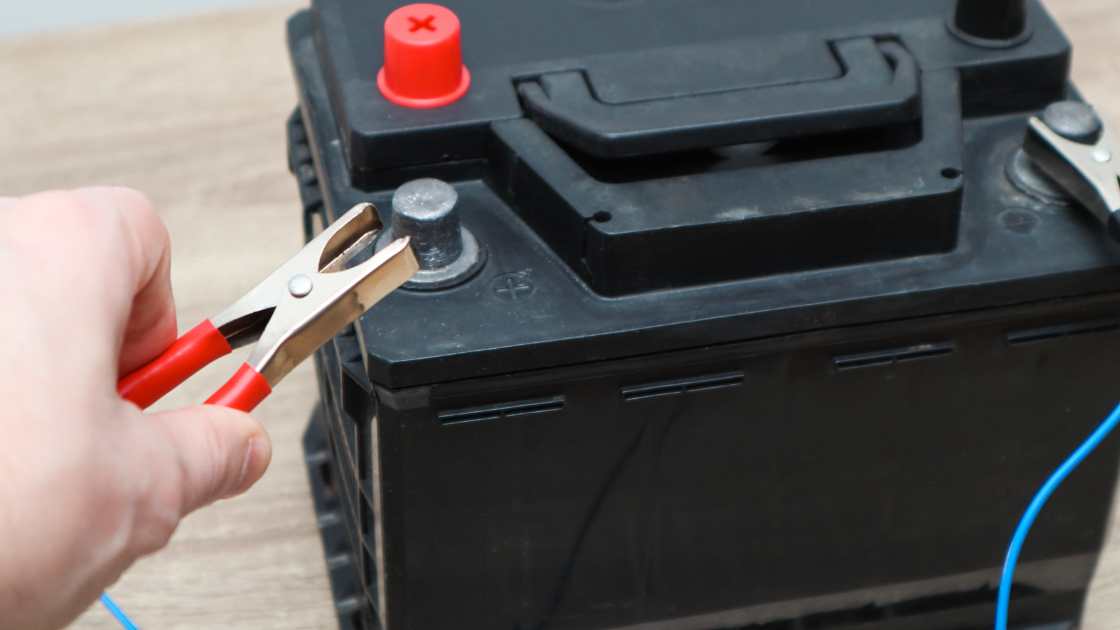
A scooter’s weight ties closely to its battery size. Large batteries mean more power and distance. They also add weight. Here’s a breakdown:
- Small batteries – Typically in lightweight scooters, under 15 lbs (7 kg)
- Medium batteries – Found in standard scooters, weight around 15-30 lbs (7-14 kg)
- Large batteries – For long-range scooters, over 30 lbs (14 kg)
Scooters for adults need bigger batteries for longer rides. This means more weight. Kids’ scooters often have smaller batteries. They are lighter and easier to carry.
Advancements In Battery Technology
Battery technology is getting better every year. New materials and designs are helping. They make batteries lighter but still powerful. This is how:
- Lithium-ion batteries – They are light and hold a lot of power.
- Solid-state batteries – Even lighter and may be in scooters soon.
These batteries reduce the weight of the scooter. They make it easier to carry and ride. Their life is also longer, keeping scooters on the road more.
Performance Linked To Pounds
What does it mean when people say “Performance Linked to Pounds”? They’re talking about how much an electric scooter weighs. Scooter weight can change how well it moves and goes. A heavier scooter might mean a slower ride. But a light scooter may not go as far. Let’s look at what weight means for your scooter ride.
How Weight Affects Speed
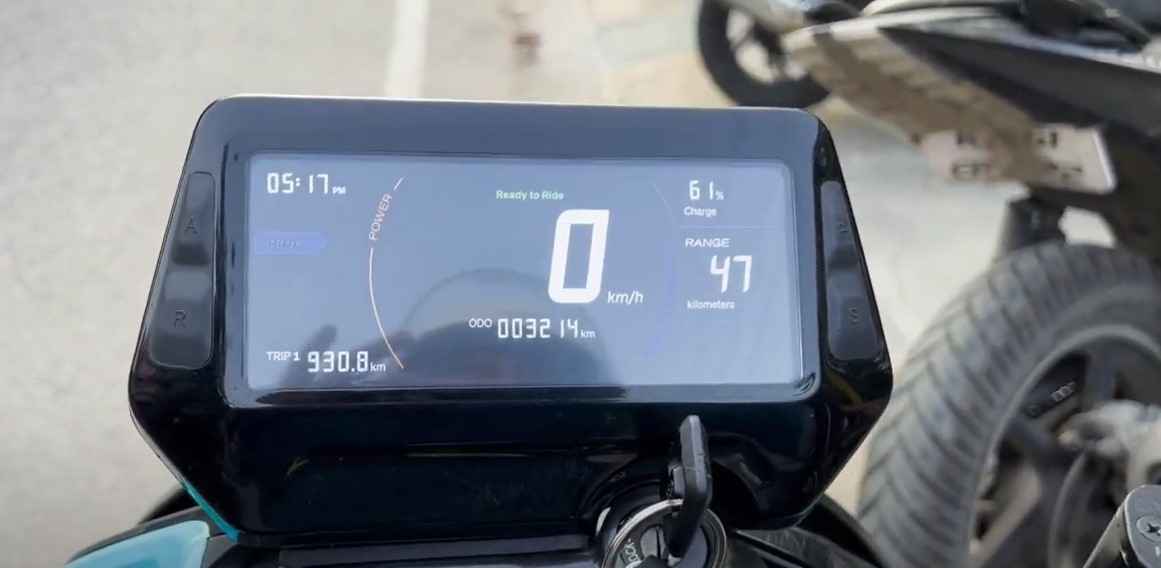
Electric scooters have a need for speed. Weight plays a big role. Scooters have motors with limits. More weight can slow them down. Like when you fill a backpack with heavy things. It’s harder to run, right?
- Heavy scooters can mean less zoom.
- Less weight leads to quicker starts and higher speeds.
Impact On Range And Battery Life
Scooters need power to keep going. This power is stored in batteries. Weight affects how long this power lasts. Think of batteries like a snack. A big snack can give you more energy for longer. A small snack? Not so much. Heavy scooters eat more “snack.”
| Scooter Weight | Range | Battery Life |
|---|---|---|
| Light | More Miles | Lasts Longer |
| Heavy | Fewer Miles | Drains Faster |
Rider Weight Capacity
Understanding the rider weight capacity is necessary before hopping on an electric scooter. It’s the key to a safe and enjoyable ride.
Maximum Load And Scooter Stability
The maximum load a scooter can handle varies. It influences how the scooter performs. All electric scooters have a weight limit.
- Lightweight scooters carry up to 175 pounds.
- Mid-range scooters can handle around 220 pounds.
- Heavy-duty models may support up to 550 pounds.
Scooter stability connects with weight capacity. A scooter needs to balance the rider’s weight. This prevents accidents.
Choosing The Right Electric scooter For Your Weight
Selecting the right scooter needs attention to weight. It ensures the scooter’s durability and performance.
Start by knowing your weight. Then, check the scooter’s max load capacity. Choose one that supports your weight with some extra buffer.
Remember to consider what you might carry. Backpacks add to the total weight on the scooter.
| Your Weight | Scooter Type | Max Load Capacity |
|---|---|---|
| Under 175 lbs | Lightweight | 175-220 lbs |
| 175 to 220 lbs | Mid-range | 220-550 lbs |
| Over 220 lbs | Heavy-duty | 550+ lbs |
Regulatory Landscape
The weight of an electric scooter plays a vital role in how regulators view its use and classification. Understanding the legal framework will help riders abide by guidelines, avoid fines, and ensure safety. Diving into the regulatory landscape reveals nuances in legislation and transportation policies that directly impact users.
Weight Limits And Legislation
Electric scooter weight limits are not just about rider capacity but also about legal compliance. Here’s a concise look at current stipulations:
- Local Laws: Cities set unique scooter weight allowances. This affects sidewalk usage.
- National Regulations: Countries enforce specific weight categories. Scooters above certain thresholds may need registration.z
These rules aim to balance efficiency and public safety. Check your local laws for precise weight limits.
Transportation And Airline Policies
When traveling with an electric scooter, you’ll encounter different requirements by various transport entities:
| Mode of Transport | Weight Restriction |
|---|---|
| Public Transit | Varies by city, lightweight scooters typically allowed |
| Airlines | Limits based on battery capacity, often under 160 Watt-hours |
For air travel, FAA regulations play a significant role. Scooters beneath specified weights simplify checkpoints.
Always confirm with carriers beforehand to ensure smooth transit with your electric scooter.
Innovations Reducing Electric scooter Weight
As we enter an era of advanced technology, the electric scooter’s weight stands out as a key feature for riders. The focus on reducing the weight of electric scooters not only enhances portability but also improves energy efficiency and overall user experience. This shift has sparked numerous innovations in the manufacturing world.
Lighter Materials And Design
Manufacturers are now using lightweight materials to lower e-scooter weights. These materials include aluminum alloys and carbon fibers, known for their strength yet lightness. Their application signifies a significant change from the traditional steel frames, making electric scooters more manageable and accessible.
- Aluminum Alloys: Provide a strong frame without the added weight.
- Carbon Fiber: Offers a high strength-to-weight ratio, ideal for mobility.
The design of electric scooters has also evolved. Slimmer profiles and hollow parts contribute to the overall weight reduction. These design choices ensure that the e-scooter remains as light as possible without compromising durability.
Future Prospects In Electric scooter Construction
Looking to the future, the potential of even lighter electric scooters is evident. Innovative materials, such as advanced polymers and composite materials, are being explored. These materials promise to cut down on weight while maintaining strength, paving the way for electric scooters that feel feather-light.
- Advanced Polymers: May offer lighter alternatives to metal components.
- Composite Materials: Can reduce weight while remaining eco-friendly.
As research continues, we can expect new construction techniques to emerge. These may involve 3D printing technologies and tailored designs that remove any unnecessary weight. Such advancements could revolutionize the portability of electric scooters, making them a staple in urban transportation.
Frequently Asked Questions On How Much Does An Electric Scooter Weight
How Much Does An Electric Scooter Weighs List?
Electric scooters typically weigh between 15 to 70 pounds (7 to 32 kg). Light, portable models average around 15-25 pounds, while heavy-duty versions can weigh up to 70 pounds.
How Heavy Is A Pure Electric Scooter?
A pure electric scooter typically weighs between 22 to 70 pounds (10 to 32 kilograms), varying by design and battery size.
How Many Pounds Is An Electric Scooter?
An electric scooter typically weighs between 15 to 70 pounds, with an average around 27 pounds. The weight can vary based on the model and features.
How Much Does An Electric Scooter Curb Weight?
Electric scooter curb weights vary, typically ranging from 25 to 70 pounds, depending on the model and features.
How Much Do Electric Scooter Weight?
Electric scooters typically weight between 20 to 50 pounds, with lighter models designed for portability and heavier ones offering more stability and features. The weight of an electric scooter depends on factors such as its build, battery size, and additional features like suspension or a larger motor.
Conclusion
Understanding the weight of electric scooters is essential for riders. It influences portability, performance, and convenience. Typically, they range from 15 to 70 pounds. Always consider weight alongside other features to ensure you find the perfect balance for your needs.
Enjoy the eco-friendly commute and ride with confidence.

